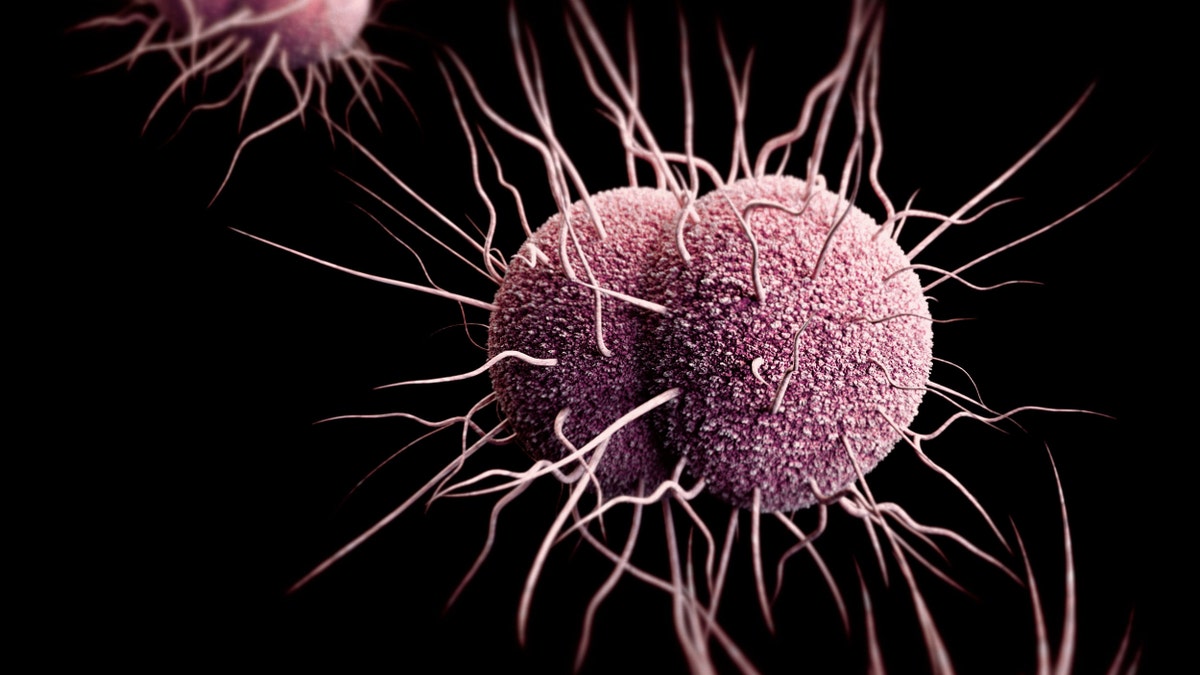
Antibiotic-resistant gonorrhea, shown here, spreads easily and symptoms are often missed. (CDC)
Even the man who discovered penicillin in the 1940s knew that one day antibiotics could become useless if used improperly.
Sir Alexander Fleming warned about the misuse of antibiotics leading to resistance, and now experts say that’s exactly what’s happening. The Centers for Disease Control and Prevention (CDC) estimates that each year, 2 million adults become infected with antibiotic-resistant bacteria, and about 23,000 die from them.
The spread of antibiotic-resistant bacteria is fueled mainly by three things: doctors prescribing antibiotics when they aren’t needed, patients not finishing antibiotic prescriptions when they are needed and the routine antibiotic treatment of livestock that eventually become food.
According to a 2013 CDC report on antibiotic resistance, “up to half of antibiotic use in humans and much of antibiotic use in animals is unnecessary and inappropriate, and makes everyone less safe. Stopping even some of the inappropriate and unnecessary use of antibiotics in people and animals would help greatly in slowing down the spread of resistant bacteria.”
As more bacterial strains become antibiotic resistant, stopping the spread of “superbugs” is a top public health priority for agencies all over the world. Here's a look at how the growing problem of antibiotic resistance developed and some steps you can take to help.
Antibiotics and superbugs
Antibiotics are powerful drugs for fighting illnesses caused by bacteria, such as strep throat or skin infections. When you stop a course of antibiotics early, some illness-causing bacteria may survive— typically the strongest members of the bacterial colony. When those multiply, the new colony is stronger than the one that first sickened you, and it may re-sicken you or spread to someone else, untreatable by the same antibiotic.
READ MORE: What’s Free Preventive Care? Flu Shots and More
Antibiotics don’t treat viral illnesses like the common cold or the flu. But patients often ask for antibiotics to treat those illnesses anyway, and doctors often prescribe them, says Dr. Louis Rice, chair of medicine at Brown University’s medical school and a leading researcher in antibiotic resistance.
So why is that a problem? Bacterial strains can exchange DNA with one another, “teaching” others to become resistant to antibiotics also. If you take antibiotics without needing them, the medicine can kill good bacteria in your body, or it can alter the good bacteria to “teach” harmful strains how to resist treatment later. When a bacterial strain can no longer be killed by any available antibiotic, it’s called a superbug.
READ MORE: What’s the Worst State for Sexually Transmitted Infections?
What to do
Although a post-antibiotic era is inevitable without action on the part of hospitals, consumers and governments worldwide, it’s still a long way off. “There’s no reason to fear superbugs around every corner, or be washing your hands all the time,” Rice says.
Instead of fearing the bugs themselves, Rice says we should all be a little more skeptical about using antibiotics. If you become sick and suspect a bacterial infection, here’s what you should do:
● Make an appointment with your doctor.
● Bring a list of your symptoms and any medications you’ve been taking to your appointment.
● Lab tests detect most bacteria, so don’t refuse one if your doctor recommends it.
● If the test comes back negative or your doctor doesn’t think you need antibiotics, don’t pressure him or her for a prescription.
● If you are prescribed antibiotics, take the entire course.
READ MORE: 10 Things to Know Before Using an Online Pharmacy
Antibiotics in meat
You may remember recent news reports about livestock growers removing antibiotics from their meat, especially poultry. “Many large industrial farms routinely give antibiotics to animals that are not sick to speed up growth and keep at bay disease that is common,” says Lena Brook of the Natural Resources Defense Council.
Some have been skeptical that routinely feeding antibiotics to livestock is dangerous to humans. There’s no evidence the practice leads to antibiotic resistance in bacteria commonly transmitted in hospitals, Rice says, but it does lead to resistant strains of bacteria like salmonella and E. coli that cause foodborne illnesses.
READ MORE: Need to Eat More Vegetables? Here’s How
“Three of the top five national chicken brands— Perdue, Tyson and Pilgrim’s Pride— are under some commitment to wean themselves from routine antibiotics use,” Brook says. She adds that this year McDonald’s joined Chick-fil-A, Chipotle and Panera in committing to source chicken produced without routine antibiotics, and now she and the NRDC are calling on Subway to do the same.
But you can’t eat out all the time. If you want to buy antibiotic-free meat, Brook advises looking for the following labels in grocery stores:
● USDA Certified Organic
● USDA Process Verified Never Ever 3
● Animal Welfare Approved
Brook says labels might also say “No Antibiotics Administered,” but that label isn’t verified by a third party, even though it does suggest a commitment to antibiotic-free practices.




















